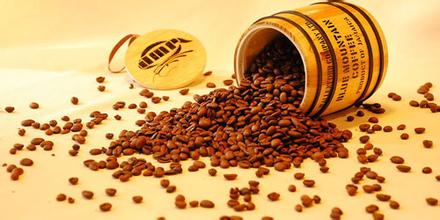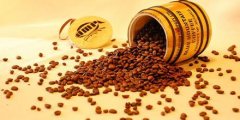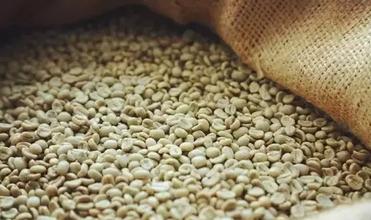Grinding scale treatment of coffee beans in Hartmann Manor in Panama
There are many ways to wash the coffee beans, but in general, after picking the coffee beans, remove the floating beans, and then soak the coffee beans in a fermentation tank. Enzymes in the water will soften the mucus attached to the endocarp of the coffee beans. Natural yeast will decompose the sugar in the mucus. This process is called fermentation. After fermentation is complete, the coffee beans are moved to the sun to dry. During the drying process, the coffee beans need to be continuously stirred to ensure drying uniformity. Finally, the shelled beans are stored in the warehouse. After the raw beans are placed, they are shelled and bagged. The coffee thus processed is clean in taste, emphasizing bright and lively fruit acids, as well as clear fruit and floral flavors.
In such a unique planting environment of Poquet, there is naturally not only such a jade rose summer, regardless of the flavor quality and value of coffee king will be expensive; but drinking rose summer every day I think is still relatively extravagant, and even if there is no economic pressure, it is not like eating shark fin and bear paw every day. The same is true of coffee, dabbling in a wide range, in order to enjoy the fun of coffee taste. In the land of Poquet, there was a bean with a particularly high cost performance ratio. And has a very beautiful name-flower butterfly. She has 40% high-quality rosewood pedigree, consisting of three varieties of rosewood, cadura and caduai. She is planted in the Baru volcanic area of Poquet and grows in the volcanic area at an altitude of 1600 meters. The treatment plant adopts fine washing treatment. Panama's special microclimate leads to abundant rainfall in this area and a large temperature difference between day and night. In addition, the volcanic soil unique to volcanic areas, as well as meticulous harvesting and fine treatment, make this coffee in terms of thickness, acid, The floral performance is quite excellent. On the basis of excellent quality, the price of this coffee bean is very close to the people. What makes this coffee bean special is that it consists of three varieties, 40% of which are rose-summer varieties, giving this coffee a distinct rose-summer flavor. The information obtained after consultation shows that due to the historical reasons of the estate, in order to pursue yield at that time, the early summer varieties were mixed with the coffee trees of Kadura and Kaduai. In order to facilitate picking, the coffee farmers did not reclassify them, but directly mixed the three varieties. After that, due to the fame of Guixia and the high price, the processing plant began to carry out fine washing treatment for such a coffee bean.

Important Notice :
前街咖啡 FrontStreet Coffee has moved to new addredd:
FrontStreet Coffee Address: 315,Donghua East Road,GuangZhou
Tel:020 38364473
- Prev

Grinding scale treatment of coffee beans in Hartmann Manor in Panama
There are many ways of washing, but generally speaking, the floating beans are removed after the coffee fruit is picked, then the pulp is removed, and then the coffee beans are soaked in a fermentation trough. The enzymes in the water will soften the mucus attached to the peel of the coffee beans. Natural yeast will break down the sugar in the mucus, a process called fermentation. After the fermentation is finished, move the coffee beans to the sun field to dry and dry.
- Next

Brazil Queen Estate Yellow Bourbon Coffee Bean Grinding Scale Production Area Variety Introduction
Brazil has been figuratively compared to the giants and kings of the coffee world. There are about 3.97 billion coffee trees, and small farmers now grow 75 percent of Brazil's coffee. Brazil has twice or even three times as many coffee producers as Colombia, which is the world's second-largest coffee producer. Unlike in the past, Brazil's economy is now less dependent on coffee.
Related
- Does Rose Summer choose Blue, Green or Red? Detailed explanation of Rose Summer Coffee plots and Classification in Panamanian Jade Manor
- What is the difference between the origin, producing area, processing plant, cooperative and manor of coffee beans?
- How fine does the espresso powder fit? how to grind the espresso?
- Sca coffee roasting degree color card coffee roasting degree 8 roasting color values what do you mean?
- The practice of lattes: how to make lattes at home
- Introduction to Indonesian Fine Coffee beans-- Java Coffee producing area of Indonesian Arabica Coffee
- How much will the flavor of light and medium roasted rose summer be expressed? What baking level is rose summer suitable for?
- Introduction to the characteristics of washing, sun-drying or wet-planing coffee commonly used in Mantenin, Indonesia
- Price characteristics of Arabica Coffee Bean Starbucks introduction to Manning Coffee Bean Taste producing area Variety Manor
- What is the authentic Yega flavor? What are the flavor characteristics of the really excellent Yejasuffi coffee beans?

